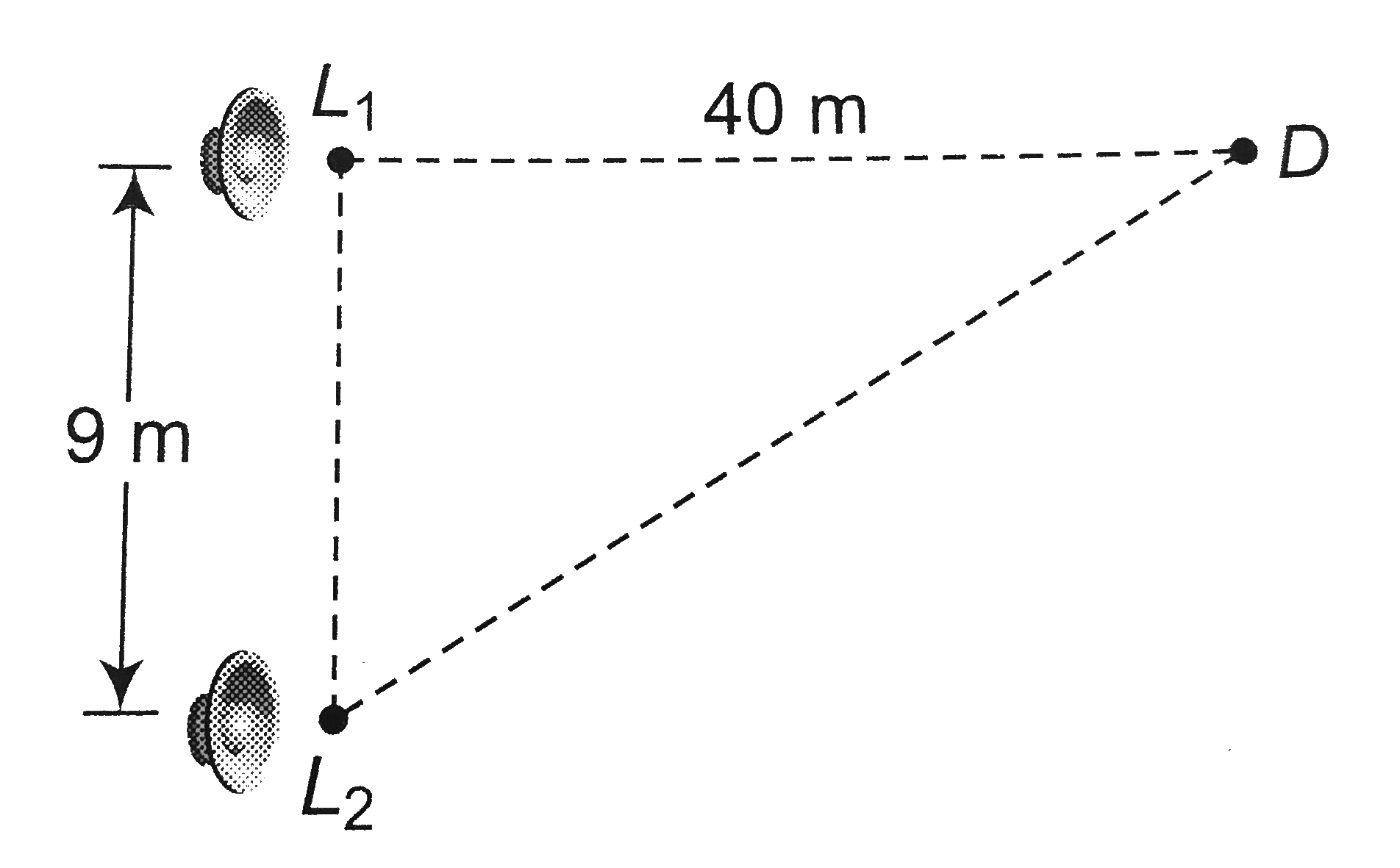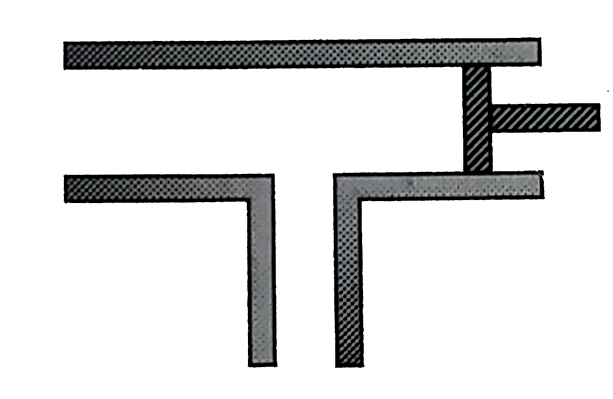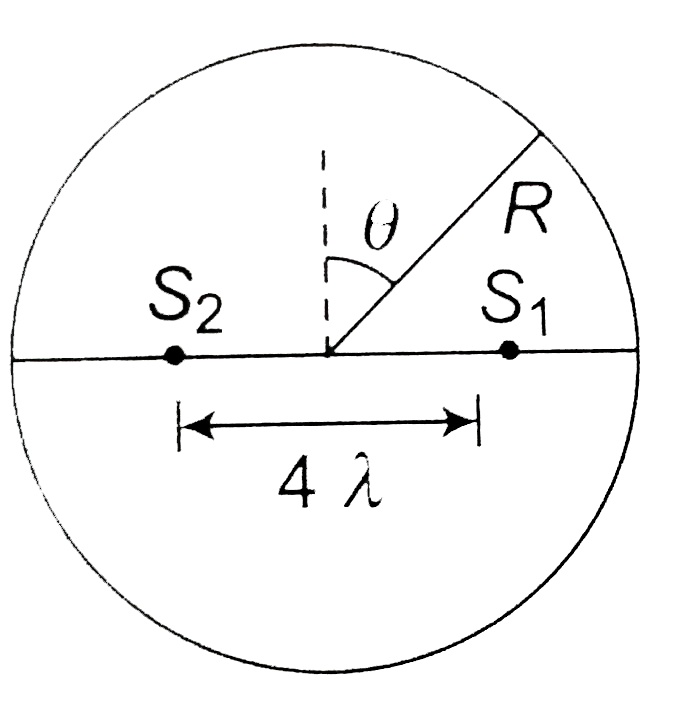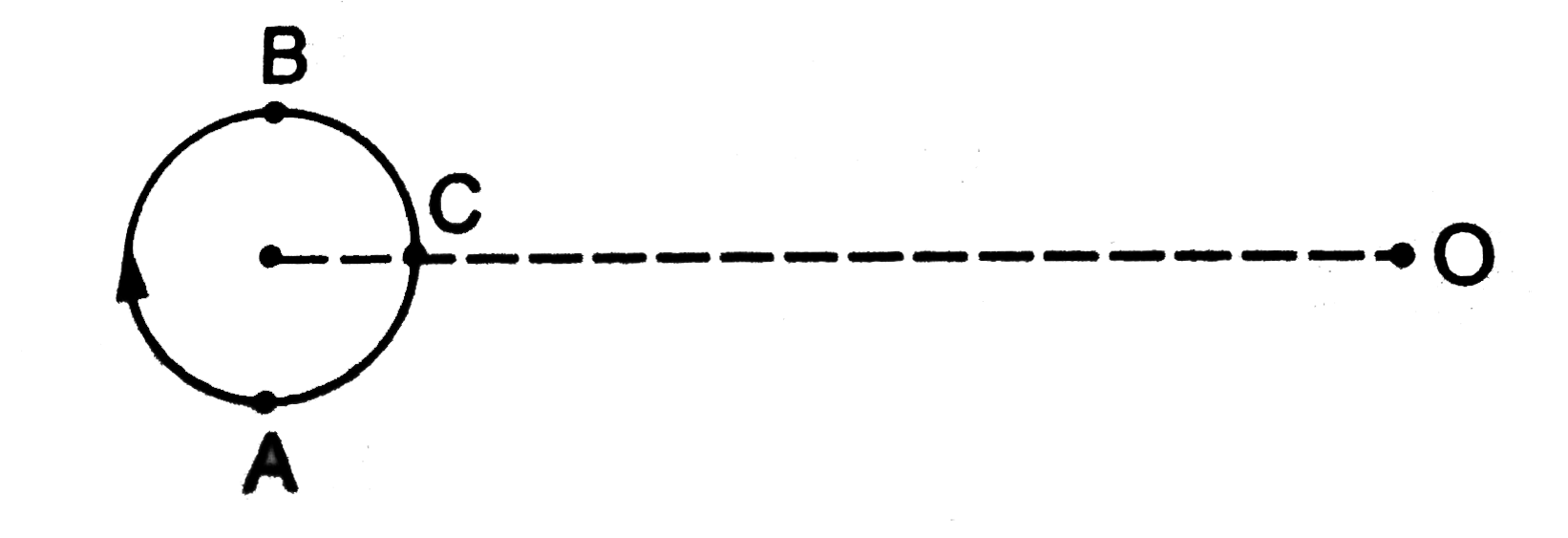Complete Solutions to Exercises of chapter SOUND WAVES of Class 11 book with complete answers and questions
| Class 11 | PHYSICS |
| Chapter | SOUND WAVES |
| CP SINGH | Exercises |
| Number Of Questions | 100 |
| Academic Year | 2023-24 |
Choose the correct statement.
01:35View SolutionVelocity of sound in air is 332 `ms^-1`. Its velocity in vacuum will be
01:14View SolutionA big explosion on the moon cannot be heard on the earth because
01:25View SolutionThe speed of sound in a medium depends on
02:03View SolutionConsider the following statements:
Assertion (A) The velocity of sound in air increases due to the presence of moisture in it.
Reason (R ): The presence of moisture in air lowers the density of air.
Of these statements-01:16View SolutionHow does the speed `v` of sound in air depend on the atmospheric pressure P?
01:16View SolutionThe velocity of sound in air is affected by change in the
(i) atmospheric pressure
(ii) moisture content of air
(iii) temperature of air
(iv) composition of air.01:55View SolutionLaplace's correction in the formula for the speed of sound given by Newton was needed because sound waves
01:11View SolutionSpeed of sound in gas is proportional to
01:07View SolutionVelocity of sound in air
(i) increases with temperature
(ii) decreases with temperature
(iii) increases with pressure
(iv) is independent of pressure01:16View SolutionThe density of oxygen is 16 times the density of hydrogen. What is the ratio of speeds of sound in them?
03:28View SolutionThe temperature at which the speed of sound in air becomes double of its value at `0^(@)C` is
01:20View SolutionA sample of oxygen at `NTP` has volume `V` and a sample of hydrogen at `NTP` has volume `4 V`. Both the gases are mixed and the mixture is maintained at `NTP` if the speed of sound in hydrogen at `NTP` is `1270 m//s`, that in the mixture will be
05:12View SolutionThe ratio of the velocity of sound in hydrogen gas to that in helium gas at the same temperature is
01:18View SolutionIf `c_(0)` and `c` denote the sound velocity and the rms velocity of the molecules in a gas, then
00:49View SolutionA source emits sound of frequency 600Hz inside water. The frequency heard in air will be equal to (velocity of sound in water`=1500(m)/(s)`, velocity of sound in air=300(m)/(s))
01:07View SolutionA stone is dropped into a well. If the depth of water below the top be `h` and velocity of sound is `v` then the splash in water is heard after `T` sec. Then:
01:21View SolutionThe speed of sound waves having a frequency of `256 Hz` compared with the speed of sound waves having a frequency of `512 Hz` is :
01:29View SolutionThe extension in a string, obeying Hooke's law, is `x`. The speed of sound in the stretched string is `v`. If the extension in the string is increased to `1.5x`, the speed of sound will be
02:50View SolutionIt is possible to distinguish between the transverse and longitudinal waves by studying the property of
01:54View SolutionAn electrically maintained tuning fork vibrates with constant frequency and constant amplitude. If the temperature of the surrounding air increases but pressure remains constant, the sound produced will have
(i) larger wavelength
(ii) larger frequency
(iii) larger velocity
(iv) larger time period01:13View SolutionA tuning fork sends sound waves in air. If the temperature of the air increases, which of the following parameters will changes?
01:33View SolutionWhen you speak to your friend, which of the following parameters have a unique value in the sound produced?
01:34View SolutionWhen we clap our hands, the sound produced is best described by Here p denotes the change in pressure from the equilibrium value
02:11View SolutionConsider the following statements about and passing through a gas.
A. the pressure of the gas at a point oscillates with time.
B. The position of a small layer of the gas oscillates with time.01:54View SolutionAs a wave propagates
(i) the wave intensity remains constant for a plane wave
the wave intensity decreases as the inverse of the distance from the source for a spherical wave
(iii) the wave intensity decreases as the inverse square of the distance from the source for a spherical wave
(iv) total intensity of the spherical wave over the spherical surface centred at the source remains constant at all times01:17View SolutionA point source emits sound equally in all directions in a non-absorbing medium. Two point `P` and `Q` are at distance of `2 m` and `3 m` respectively from the source. The ratio of the intensities of the wave at `P` and `Q` is :
01:39View SolutionA point source emits sound equally in all directions in a non-absorbing medium. Two points `P` and `Q` are at the distance of `9 meters` and 25 meters respectively from the source. The ratio of amplitudes of the waves at `P` and `Q` is…..
02:40View SolutionTwo sound waves move in the same direction in the same medium. The pressure amplitudes of the waves are equal but the wavelength of the first wave is double the second. Let the average power transmitted across a cross-section by the first wave be `P_(1)` and that by the second wave be `P_(2)`. Then
01:26View SolutionThe intensity of a plane progressive wave of frequency `1000 Hz` is `10^(-10) Wm^(-2)`. Given that the speed of sound is `330 m//s` and density of air is `1.293 kg//m^(3)`. Then the maximum change in pressure in `N//m^(2)` is
00:56View SolutionIf the displacement amplitude of sound is doubled and the frequency reduced to one-fourth, the intensity will become
00:54View SolutionIf the amplitude of a wave at a distance `r` from a point source is `A`, the amplitude at a distance `2 r` will be
00:59View SolutionA line source emits a cylindrical expanding wave. Assuming the medium absorbs no energy find how the ampitude and intensity of wave depend on the distance from the source?
01:29View SolutionA spherical source of power `4 W` and frequency `800 Hz` is emitting sound waves. The intensity of waves at a distance `200 m` is
00:49View SolutionA sound has an intensity of `2 xx 10^(-8) W//m^(2)`. Its intensity level in decibels is `(log_(10) 2 = 0.3)`
01:34View SolutionA person speaking normally produces a sound intensity of `40 dB` at a distance of `1 m`. If the threshold intensity for reasonable audibility is `20 dB`, the maximum distance at which he can be heard cleary is.
02:30View SolutionIf the pressure amplitude in a sound wave is tripled, then by what factor the intensity of sound wave is increased?
00:55View SolutionIf the intensity of sound is doubled, by how many decibels does the sound level increase ?
01:20View SolutionHow many times more intense is a `90 dB` sound than a `40 dB` sound?
00:56View SolutionPitch of a sound depends on :
00:56View SolutionThe same notes being played on sitar and veena differ in
01:35View SolutionWhen we hear a sound, we can identify its source from
01:20View SolutionIn an orchestra, the musical sounds of different instruments are distinguished from one another by which of the following characteristics.
01:43View SolutionWhen sound wave is refracted from air to water, which of the following will remain unchanged?
02:04View SolutionA sound wave travelling with a velocity `V` in a medium `A` reaches a point on the interface of medium `A` and medium `B`. If the velocity in the medium `B` be `2 V`, then the angle
of incidence for total internal reflection of the wave will be greater than:02:03View SolutionA sound wave travels from air to water. The angle of incidence is `alpha_(1)` and the angle of refraction is `alpha_(2)`. Assuming Snells law to be valid:
01:22View SolutionA thin plane membrane separates hydrogen at `7^(@) C` from hydrogen at `47^(@) C`, both being at the same pressure. If a collimated sound beam travelling from the cooler gas makes an angle of incidence of `30^(@)` at the membrane, the angle of refraction is
02:03View SolutionThe minimum distance to hear echo (speed of sound in air is `340 m//s`)
00:38View SolutionA engine is approaching a hill at constant speed. When it is at a distance of `0.9 km`, it blows a whistle, whose echo is heard by the driver after `5 s`. If the speed of sound is `340 m//s`, calculate the speed of the engine.
04:07View SolutionA man stands between two parallel cliffs (not in middle). When he claps his hands, he hears two echoes one after `1` second and the other after `2` second. If the velocity of sound in air is `330 ms^(-1)` , the width of the valley is
01:55View SolutionIn a hall, a person receives direct sound waves from a source `120 m` away. He also receives waves from the same source which reach him after being reflected from the `25 m` high ceiling at a point halfway between them. The two waves interfere constructively for wavelengths (in metres)
02:19View Solution
Two loudspeakers `L_1` and `L_2` driven by a common oscillator and amplifier, are arranged as shown. The frequency of the oscillator is gradually increased from zero and the detector at D records a series of maxima and minima. If the speed of sound is `330ms^-1` then the frequency at which the first maximum is observed is01:42View SolutionVibrating tuning fork of frequency `n` is placed near the open end of a long cylindrical tube. The tube has a side opening and is fitted with a movable reflecting piston. As the piston is moved through `8.75 cm`, the intensity of sound changes from a maximum to minimum. If the speed of sound is `350 m//s`. Then `n` is
 01:55View Solution
01:55View SolutionTwo sources of sound are placed along the diameter of a circle of radius `R(R gt gt 41)`. How many minima will be heard as one moves along the perimeter of circle.
 04:42View Solution
04:42View SolutionBeats occur because of
01:34View SolutionThe phenomenon of beats can take place
01:42View SolutionWhen beats are produced by two progressive waves of nearly the same frequency, which one of the following if correct?
02:20View SolutionTwo tuning forks of frequencies `256 Hz` and `258 Hz` are sounded together. The time interval, between two consecutive maxima heard by an observer is
01:03View SolutionTwo sources of sound placed close to each other are wmitting progressive waves given by `y_1=4sin600pit` and `y_2=5sin608pit`. An observer located near these two sources of sound will hear:
02:01View SolutionMaximum number of beats frequency heard by a human being is
01:08View SolutionTwo vibrating tuning forks produce progressive waves given by `y_(1)=sin500pit` and `y_(2)=2sin506pit`. Number of beats produced per minute is:
01:23View SolutionWhen a tuning fork `A` of frequency `100 Hz` is sounded with a tuning fork `B`, the number of beats per second is `2`. On putting some wax on the prongs of `B`, the number of beats per second becomes `1`. The frequency of the fork `B` is
01:41View SolutionTwo tuning forks `A` and `B` vibrating simultaneously produce `5 beats//s`. Frequency of `B` is `512 Hz`. If one arm of `A` is filed, the number of beats per second increases. Frequency of `A` is
03:41View SolutionThe freuquency of tuning forks A and B are respectively `3%` more and `2%` less than the frequency of tuning fork `C`. When A and B are simultaneously excited, 5 beats per second are produced. Then the frequency of the tuning fork `A` (in Hz)` Is
01:34View SolutionEach of the two strings of length `51.6 cm` and `49.1 cm` are tensioned separately by `20 N` force. Mass per unit length of both the strings is same and equal to `1 g//m`. When both the strings vibrate simultaneously, the number of beats is
01:31View SolutionTwo wires are fixed in a sanometer. Their tension are in the ratio `8:1` The lengths are in the ratio `36:35` The diameter are in the ratio `4:1` Densities of the materials are in the ratio `1:2` if the lower frequency in the setting is `360Hz`. The beat frequency when the two wires are sounded together is
07:03View SolutionWhen beats are produced by two progressive waves of same amplitude and of nearly same frequencies then the maximum loudness of the resulting sound is `n` times the loudness of each of the component wave trains. The value of `n` is
01:16View Solution`65` tuning forks are arranged in order of increasing frequency. Any two successive forks produce `4 beats//s`, when sounded together. If the last fork gives an octave of the first, the frequency of the first fork is
01:18View SolutionIn a stationary longitudinal wave, nodes are points of
00:52View SolutionWhen the open organ pipe resonates in its fundamental mode then at the centre of the pipe
01:27View SolutionAn organ pipe, open at both ends, contains
01:28View SolutionWhich of the following statements is wrong?
01:35View Solutionthe fundamental frequency of a closed organ pipe is `50 Hz`. The frequency of the second overtone is
01:38View SolutionAn open pipe is suddenly closed at one end with the result that the frequency of third harmonic of the closed pipe is found to be higher by `100 Hz` then the fundamental frequency of the open pipe. The fundamental frequency of the open pipe is
09:06View SolutionAn organ pipe `P_(1)` open at one end vibrating in its first harmonic and another pipe `P_(2)` open at ends vibrating in its third harmonic are in resonance with a given tuning fork. The ratio of the length of `P_(1)` to that `P_(2)` is
02:38View SolutionAn air column in a pipe, closed at one end, will be in resonance with a vibrating tuning fork of frequency `680 Hz` if the length of the column in metres be `v = 340 m//s`
(Choose the incorrect option)01:43View SolutionThe vibrations of four air columns are represented in the adjoining figures. The ratio of frequencies `n_(p) : n_(q) : n_(r) : n_(s)` is
 01:43View Solution
01:43View SolutionAn organ pipe closed at one end has fundamental frequency of `500 Hz`. The maximum number of overtones generated by this pipe which a normal person can hear is
03:09View SolutionFor a certain organ pipe, three successive resonance frequencies are observer at `425`, `595` and `765 H_(Z)` respectively. Taking the speed of sound in air to be `340 m//s`, (a) explain whether the pipe is closed at one or open at boyh ends. (b) determine the fundamental frequency and length of the pipe.
01:32View SolutionVelocity of sound in air is `320m//s`. A pipe closed at one end has of `1m`. Neglecting end corrections, the air column in air pipe can resonate for sound of frequency :
02:29View SolutionAn open pipe is in resonance in `2nd` harmonic with frequency `f_(1)`. Now one end of the tube is closed and frequency is increased to `f_(2)` such that the resonance again ocuurs in `nth` harmonic. Choose the correct option
03:36View SolutionThe length of two open organ pipes are `l` and `(l+deltal)` respectively. Neglecting end correction, the frequency of beats between them will b approximately.
02:06View SolutionAn organ pipe filled with a gas at `27^(@) C` resonates at `400 Hz` in its fundamental mode. If it is filled with the same gas at `90^(@) C`, the resonance frequency will be
01:09View SolutionIf frequency of organ pipe is independent of temperature, then value of `alpha` (coefficient of linear expansion of material of pipe) should be nearly
01:46View SolutionThe fundamental frequency of a vibrating organ pipe is `200 Hz`.
(i) The first overtone is `400 Hz`.
(ii) The first overtone may be `400 Hz`.
(iii) The first overtone may be `600 Hz`.
(iv) `600 Hz` is an overtone.01:31View SolutionA column of air at `51^(@) C` and a tuning fork produce `4` beats per second when sounded together. As the temperature of the air column is decreased, the number of beats per second tends to decrease and when the temperature is `16^(@) C` the two produce `1` beat per second. Find the frequency of the tuning fork.
03:43View SolutionIn an experiment, it was found that a tuning fork and sonometer wire gave 5 beats per second, both when the length of wire was 1m and 1.05m. Calculate the frequency of the fork.
02:54View SolutionSound waves of frequency `600 H_(Z)` fall normally on perfectly reflecting wall. The distance from the wall at which the air particles have the maximum amplitude of vibration is (speed of sound in air = `330 m//s`)
01:32View SolutionFor a resonance tube, the air columns for the first and the second resonance differ in length by `31.5 cm`. The wavelength of the wave is
01:09View SolutionIn a resonance tube, using a tuning fork of frequency `325 Hz`, the first two resonance lengths are observed at `25.4 cm` and `77.4 cm`. The speed of sound in air is
01:05View SolutionIn previous problem, end correction is
00:42View SolutionAn air column, closed at one end and open at the other end, resonates with a tuning fork of frequency `f` when its length is `45 cm, 99 cm` and at two other lengths in between these values. The wavelength of sound in the air column is
01:16View SolutionA long glass tube is held vertically in water. A tuning fork is struck and held over the tube. Strong resonances are observed at two successive lengths `0.50 m` and `0.84 m` above the surface of water. If the velocity of sound is `340 m//s`, then the frequency of the tuning fork is
01:45View SolutionA glass tube of `1.0 m` length is filled with water. The water can be drained out slowly at the bottom of the tube. If a vibrating tuning fork of frequency `500 c//s` is brought at the upper end of the tube and the velocity of sound is `300 m//s`, then the total number of resonances obtained will be
01:49View SolutionA tuning fork of frequency `340 H_(Z)` is sounded above an organ pipe of length `120 cm` . Water is now slowly poured in it . The minimum height of water column required for resonance is ( speed of sound in air = `340 m//s`)
02:20View SolutionOn producing the waves of frequency 1000 Hz in a kundt's tube the total distance between 6 successive nodes n 85 cm. Speed of sound in the gas filled in the tude is
01:14View SolutionIf in an experimental determination of the velocity of sound using a Kundt's tube, standing waves are set up in the metallic rod as well as in the rigid tube containing air, then both the waves have the same
01:17View SolutionThe change in frequency due to Doppler effect does not depend on
01:21View SolutionThe engine of a train sound a whistle at frequency v, the frequency heard by a passenger is
01:33View SolutionA small source of sound moves on a circle as shown in figure and an observer is sitting at O. Let `v_1,v_2,v_3` be the frequencies heard when the source is at A,B and C respectively.
 .02:01View Solution
.02:01View Solution
Exercises questions and complete solutions for chapter SOUND WAVES of CP SINGH PHYSICS (HINGLISH) of Class 11
